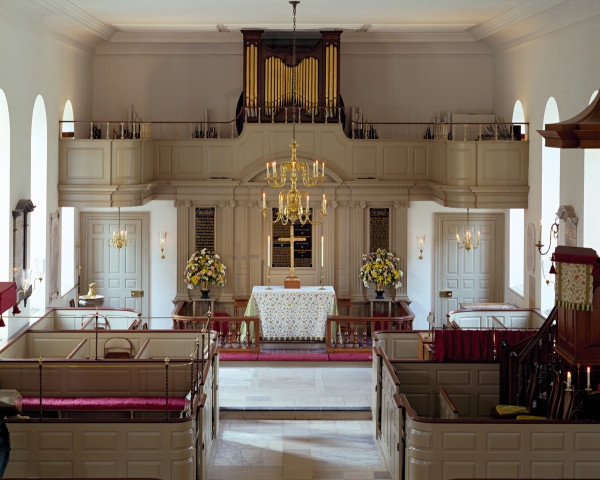 Since April is Religion Month and this year marks the 300th anniversary of Bruton Parish Church, we thought we’d take a closer look at how God and spirituality were critical aspects of everyday life in the colonial capital—so much so that going to church was the law! We’ll take you behind the scenes of our ongoing exhibit Faith, Community, and Change currently on display inside our Art Museums.
Since April is Religion Month and this year marks the 300th anniversary of Bruton Parish Church, we thought we’d take a closer look at how God and spirituality were critical aspects of everyday life in the colonial capital—so much so that going to church was the law! We’ll take you behind the scenes of our ongoing exhibit Faith, Community, and Change currently on display inside our Art Museums.
At the time of the Revolution, there were 100 parishes of the Church of England in the Commonwealth, including Bruton Parish. And as Jan Gilliam, Manager of Exhibit Planning for Colonial Williamsburg, informed us—all Virginians were required to attend church at least once a month. In fact, if you missed enough services, you could actually end up in court where you faced fines. And although the governor (acting as a representative of the king) was the head of the Church of England in Virginia, it was up to parish vestries to levy taxes on the colonists. The collected monies paid for the construction and repair of the buildings, clergy salaries, and helped the poor. Vestrymen were prominent members of society and often members of the House of Burgesses like George Wythe and Peyton Randolph. Another name I think some of you might recognize is Thomas Everard.
 Bruton Parish itself was actually formed in the 17th century but the building that now stands on Duke of Gloucester Street wasn’t built until 1715. As the town developed, the congregation continued to expand and it quickly became evident the parishioners had outgrown their original structure. Over the past couple of centuries the building has undergone several renovations, but through it all the parish has remained active. In fact, you can still attend Sunday services if you live in town or are here visiting us for vacation.
Bruton Parish itself was actually formed in the 17th century but the building that now stands on Duke of Gloucester Street wasn’t built until 1715. As the town developed, the congregation continued to expand and it quickly became evident the parishioners had outgrown their original structure. Over the past couple of centuries the building has undergone several renovations, but through it all the parish has remained active. In fact, you can still attend Sunday services if you live in town or are here visiting us for vacation.
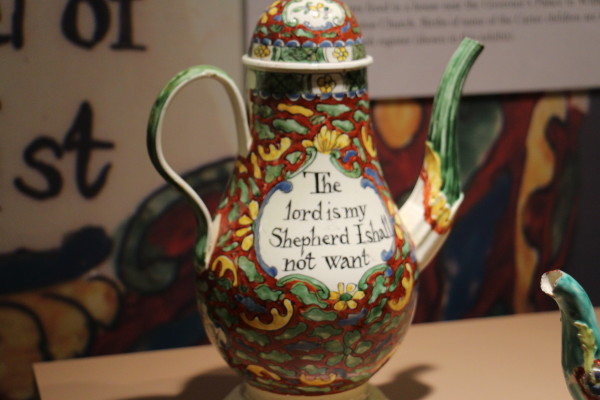 Worship wasn’t all the church was used for; colonists could often catch up on news and gossip while socializing in the churchyard. The location had a lot to do with the constant flurry of activity. On one end of DoG Street, you had the Wren Chapel and on the other—the Capitol. Smack dab in the middle was Bruton Parish Church. And just as you can now, you could see the church’s steeple and weathervane from just about any point in town. We first told you about the replica built by our blacksmiths in a blog post we shared in October. Amazingly, the original weathervane survived numerous renovations and it wasn’t until 2011 that anyone realized it was the real deal—dating back almost 300 years! The incredible discovery is on display with other original church artifacts (including some beautiful silver) which are all on loan to us from the church and the College of William & Mary.
Worship wasn’t all the church was used for; colonists could often catch up on news and gossip while socializing in the churchyard. The location had a lot to do with the constant flurry of activity. On one end of DoG Street, you had the Wren Chapel and on the other—the Capitol. Smack dab in the middle was Bruton Parish Church. And just as you can now, you could see the church’s steeple and weathervane from just about any point in town. We first told you about the replica built by our blacksmiths in a blog post we shared in October. Amazingly, the original weathervane survived numerous renovations and it wasn’t until 2011 that anyone realized it was the real deal—dating back almost 300 years! The incredible discovery is on display with other original church artifacts (including some beautiful silver) which are all on loan to us from the church and the College of William & Mary.

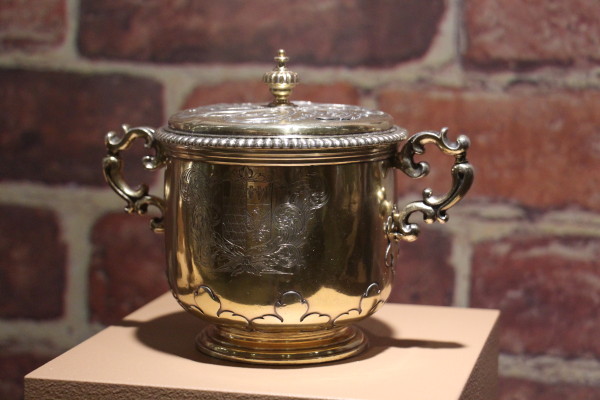 One of the most interesting artifacts I suggest you look for is original Book of Common Prayers. It was the official doctrine of the Anglican church, approved by the king, and distributed to all of the colonies. It holds all of the daily prayers including one asking God to keep the king safe and healthy. After the Revolution, you can see the hand-written edits where references to the king were crossed out and replaced with the word “president.” This was the case for all mentions of royalty and England as well. The new Episcopal Church didn’t approve the American version of this Book of Prayers until 1789, publishing it the following year.
One of the most interesting artifacts I suggest you look for is original Book of Common Prayers. It was the official doctrine of the Anglican church, approved by the king, and distributed to all of the colonies. It holds all of the daily prayers including one asking God to keep the king safe and healthy. After the Revolution, you can see the hand-written edits where references to the king were crossed out and replaced with the word “president.” This was the case for all mentions of royalty and England as well. The new Episcopal Church didn’t approve the American version of this Book of Prayers until 1789, publishing it the following year.
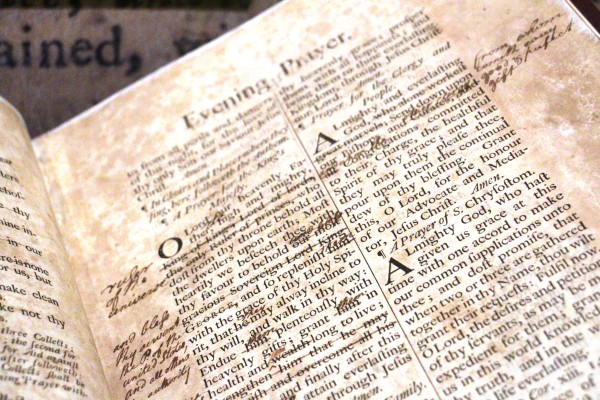 I could go on and on about all of the wonderful history and education you’ll find as part of this exhibit but I don’t want to give it all away. Stop by to read more about the evolution of religious freedom and how Thomas Jefferson played a role in granting colonists, especially Presbyterians, the right to practice their own beliefs. Also, find out why some families were required to attend church but couldn’t actually sit together during worship!
I could go on and on about all of the wonderful history and education you’ll find as part of this exhibit but I don’t want to give it all away. Stop by to read more about the evolution of religious freedom and how Thomas Jefferson played a role in granting colonists, especially Presbyterians, the right to practice their own beliefs. Also, find out why some families were required to attend church but couldn’t actually sit together during worship!
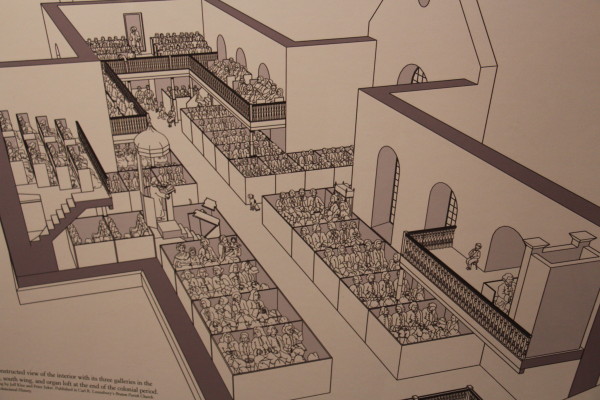 Have you visited our exhibit? What did you find most interesting about religion in the 18th century versus the 21st century?
Have you visited our exhibit? What did you find most interesting about religion in the 18th century versus the 21st century?
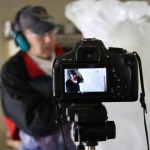
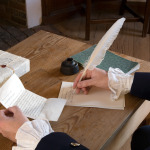

As a descendant of Col. Thomas Ballard and Gabriel Maupin of the Colonial portion, I would love to see this exhibit, but due to husbands illness, it would be impossible. But…I love the fact you have posted this much on FB. Thank you so much. I’ve been in Bruton Parish Church, seen the brass plaque with the Col.’s name on it, and the male ushers treated me like royalty. Thank you so much.
Susie… I’m so glad you enjoyed the blog and I’m sorry you and your husband can’t make it to see the exhibit in person. Please let me know if there is anything else I can photograph for you. What an amazing family history you have!